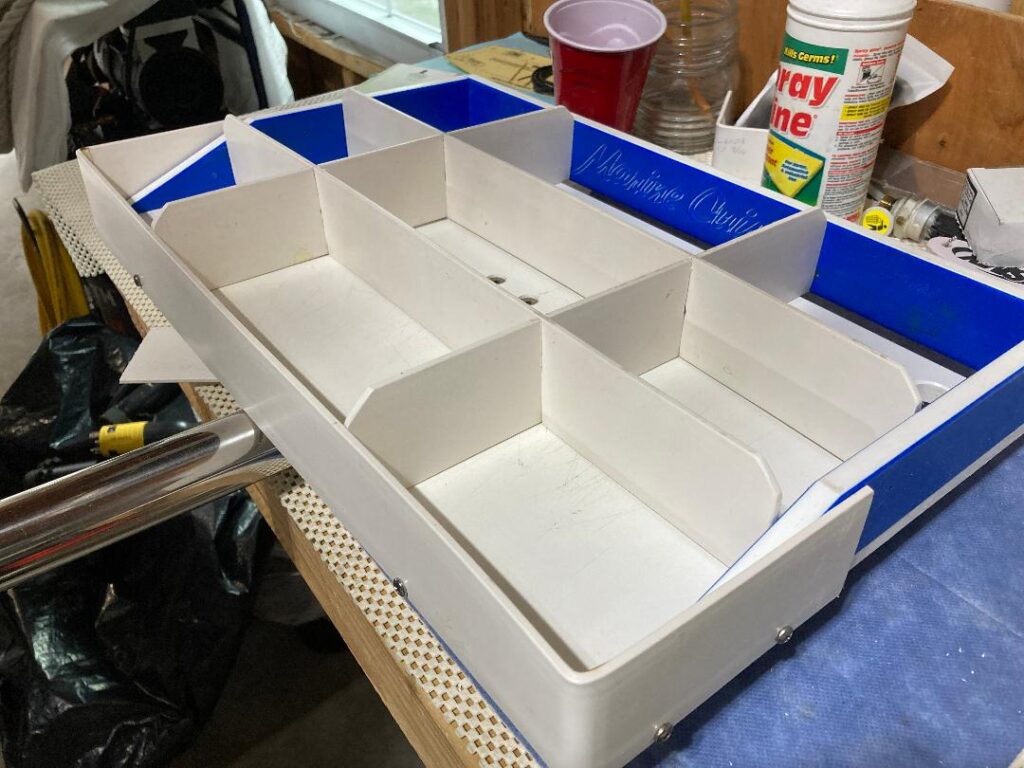In my June article (Looking Back), I wrote about a boat show I attended with my father back in the late sixties or early seventies. There was one particular boat that I saw, which left a lasting impression. It was a Tollycraft sport fishing boat. Mr. Tim Powers of Juneau, Alaska was visiting family in Connecticut and picked up his first issue of Long Island Boating World and read that article. Turns out Tim has a Tollycraft in Alaska that he uses for fishing and cruising. He was kind enough to send a couple of pictures.
In 2019, I wrote an article (Putting It All Together) about designing and installing a new cooling system for the Cummins diesels in my boat. I posted that project online for owners of the same model engine and have been contacted by some owners for that information. The same day Tim contacted me, I was contacted by Mr. Gord Groves of British Columbia about that project. As always, I was eager to help and sent him the complete parts list and drawings. It is amazing to me what a small world we live in!
In the meantime, we have been busy here with the boat and other events and projects. First up was our forty-fifth wedding anniversary. We elected to take a cruise to Bermuda and had a great time. We did some snorkeling and took a glass-bottom boat tour and maybe ate just a bit too much! There is one thing I noticed about the cruise ship that bothered me. When we boarded the ship and made our way to our cabin, there were pamphlets claiming how environmentally conscience the cruise ship company was. As we left New York Harbor, I noticed how clean the exhaust from the ship was. The next morning, when we were out at sea, I noticed how much pollution was pouring out of the stacks. It was like they made their own yellow-tinted fog bank. I was told later that it is because in the United States, they burn cleaner, more expensive fuel. In international waters, they burn a cheaper high-sulfur content fuel.

But back to our boat. Last year, our stereo died on us, after eighteen years, I guess it was time to go. I was lucky enough to find an updated NOS (New Old Stock) version of that stereo that would fit in the same cutout and used the same wiring harness. I thought I could be done with that replacement in less than twenty minutes. I had the old unit out and the new one wired very quickly. I was astonished at how easy it was going until I slid the unit into place. It was at that moment that I found out the new stereo was about two inches too long! No what?
There was no way to install it in the same place, so I was able to sell it online. After doing some searching, I found a new model that used the same wiring harness that fit, but would need a new mounting trim plate. With careful measurement, I made an aluminum trim plate and painted it white. It was drilled to use the same screw holes and it was installed in twenty minutes with no further troubles! The new stereo does not play CDs like the old one did, but it can connect by Bluetooth or by inserting a flash drive. I have thousands of songs on my computer and make my playlists. So now, instead of burning CDs, I just send a playlist to the flash drive. It’s great having music onboard, but I also found out that a speaker is blown!
My last little project I finished in July. I have had a fish cutting board in my shed that I have never used. The type that sits in a rod holder. I thought it would make a nice addition for those times when we sit in the cockpit and have lunch or just hang out. All it needs is a lip to fully enclose the board, so things don’t go sliding off when a wake hits. I had some plastic from who knows where, so I cut a piece to fit. I had to use a propane torch to get the plastic warm enough to bend two corners, and it worked out well. My wife suggested a grate inserted into it to secure the drinks, so that’s next.
One other thing I started doing that makes life easier while at the anchorage. A few years ago, I purchased a solar generator for use on our other boat. That boat had electric power when at the dock, but did not have a generator and we wanted a way to keep the refrigerators working overnight and maybe the air conditioning too. This particular solar generator had a thirty-ampere outlet that, with the right power cord, I could connect to the boat’s shore power inlet. It worked very well and when I sold that boat, I kept the solar generator. Besides the thirty-ampere outlet, it has four fifteen-ampere outlets as well as twelve-volt outlets and inductive charging for cell phones.
Our new boat has a generator, but when at anchor and swimming or just hanging out, it is a little noisy and the exhaust can blow back, and diesel exhaust can get to some people. If you don’t have a generator running, the food and ice stored in the refrigerators can start to warm up or melt. More than once, we had the ice melt in the freezer and drip out onto the cabin floor or deck in the helm area.
So now I take the solar generator and hook it up to the shore power inlet. The refrigerators stay powered up all day and if we run lights or other equipment, I can power up the boat’s battery charger. If all else fails, I can start the main diesel generator.
